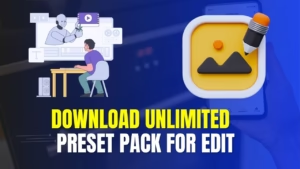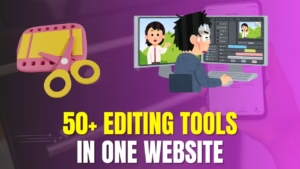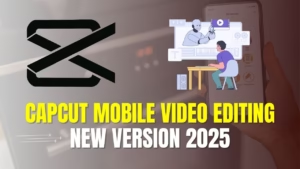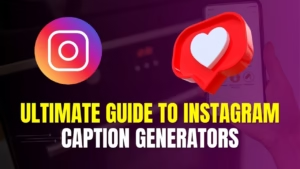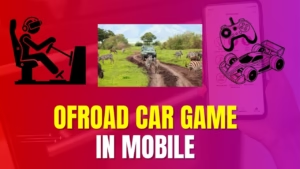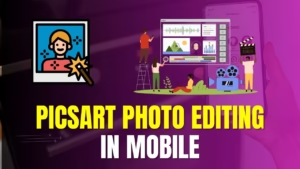How to Convert Photos into a Stunning Video – H1: Introduction
- Why Turning Photos into Videos is a Game-Changer
- How to Convert Photos into a Stunning Video
H2: The Power of Visual Storytelling
- H3: Why Photos Alone Don’t Tell the Full Story
- H3: How Videos Engage Better Than Static Images
H2: Benefits of Converting Photos to Video
- H3: Emotional Impact
- H3: Easy Sharing Across Platforms
- H3: Perfect for Personal and Professional Use
H2: What You Need to Get Started
- H3: A Collection of Photos
- H3: Choosing the Right Tools
- H3: Basic Editing Knowledge (Not Always Needed!)
H2: Step-by-Step Guide to Turn Photos Into Video
- H3: Step 1 – Organize Your Photos
- H3: Step 2 – Choose a Style or Theme
- H3: Step 3 – Add Music and Transitions
- H3: Step 4 – Apply Effects and Captions
- H3: Step 5 – Preview and Export
H2: Top Features to Look For in a Photo-to-Video Converter
- H3: AI-Powered Templates
- H3: Drag-and-Drop Simplicity
- H3: Music Integration
- H3: Auto-Sync Features
H2: Tips to Make Your Photo Video Stand Out
- H3: Tell a Story
- H3: Keep It Short and Sweet
- H3: Match Music with Mood
H2: Best Use Cases for Photo-to-Video Creation
- H3: Weddings and Anniversaries
- H3: Travel Diaries
- H3: Business Promotions
- H3: School or College Projects
H2: Common Mistakes to Avoid
- H3: Overloading with Effects
- H3: Using Low-Quality Photos
- H3: Ignoring Transitions
H2: Mobile vs Desktop Editing
- H3: Pros and Cons of Each
- H3: What Works Best for Beginners?
H2: Exporting and Sharing Your Video
- H3: Best Formats to Use
- H3: Uploading to Social Media Platforms
- H3: Saving for Long-Term Storage
H2: How AI is Changing the Game in Photo-to-Video Conversion
- H3: Smarter Transitions
- H3: Instant Auto-Edits
- H3: Facial Recognition and Tagging
H2: Safety and Privacy Tips
- H3: Handling Personal Photos Online
- H3: Watermarking for Protection
H2: Conclusion
H2: FAQs
- What is the best format for photo videos?
- How long should a photo video be?
- Can I use copyrighted music?
- What’s the easiest way to turn photos into a video?
- Can I do it all from my phone?
How to Convert Photos into a Stunning Video: A Complete Guide
Introduction
Ever wished your photos could speak for themselves? Well, turning them into a video does exactly that. Whether it’s a collection of vacation snapshots, a family event, or highlights from your business, photo videos add emotion, flow, and story — something still images can’t always do on their own.
The Power of Visual Storytelling
Why Photos Alone Don’t Tell the Full Story
Photos capture a moment, but not the feeling that lingers before and after. That’s where videos come in. They link your images together with music, transitions, and emotion to create something way more powerful.
How Videos Engage Better Than Static Images
Ever noticed how videos grab your attention faster while scrolling on social media? That’s not just you. Studies show videos are more engaging and memorable than standalone images.
Benefits of Converting Photos to Video
Emotional Impact
Videos trigger more emotions. A fade-in of a childhood picture with soft piano music in the background? Cue the waterworks.
Easy Sharing Across Platforms
Photo videos are perfect for Instagram, Facebook, YouTube — pretty much anywhere. They’re easy to watch, quick to share, and fun to react to.
Perfect for Personal and Professional Use
Whether you’re crafting a wedding recap or promoting your small business, photo videos do the job. They make your content look polished and professional with very little effort.
What You Need to Get Started
A Collection of Photos
Start with your best shots. Organize them by theme, timeline, or event.
Choosing the Right Tools
Many tools out there are plug-and-play, offering features like drag-and-drop, ready-made templates, and AI magic to handle most of the work.
Basic Editing Knowledge (Not Always Needed!)
Even if you’ve never touched video editing software before, beginner-friendly tools make it surprisingly easy.
Step-by-Step Guide to Turn Photos Into Video
Step 1 – Organize Your Photos
Put them in order — chronologically, by story, or just vibes. It makes your final video flow better.
Step 2 – Choose a Style or Theme
Go for a romantic, cinematic, or upbeat vibe based on the purpose. The right style adds a huge difference.
Step 3 – Add Music and Transitions
Music sets the mood. Transitions tie your images together. Use soft fades, zooms, and slides for smooth flow.
Step 4 – Apply Effects and Captions
Want a little flair? Add text overlays, filters, and motion effects. Just don’t overdo it — subtlety is key.
Step 5 – Preview and Export
Watch it through. Make tweaks. Then export it in HD and get ready to wow your audience.
Top Features to Look For in a Photo-to-Video Converter
AI-Powered Templates
These save time and instantly give your video a polished look.
Drag-and-Drop Simplicity
No tech skills? No problem. Drag your photos in, pick music, and you’re good to go.
Music Integration
A library of royalty-free tunes or the ability to upload your own — both are a win.
Auto-Sync Features
Let AI auto-match your image transitions to the beat of the music. Game-changer.
Tips to Make Your Photo Video Stand Out
Tell a Story
Arrange photos to create a narrative — beginning, middle, and end.
Keep It Short and Sweet
Unless it’s a special event like a wedding, aim for 1–3 minutes.
Match Music with Mood
Slow tunes for nostalgia. Upbeat for travel or celebrations. Music matters more than you think.
Best Use Cases for Photo-to-Video Creation
Weddings and Anniversaries
Relive your favorite day with heartfelt images and music.
Travel Diaries
Show off your adventure without spamming everyone with 100 random pics.
Business Promotions
Before/after shots, product demos, client testimonials — all shine in video format.
School or College Projects
Stand out with a dynamic, well-edited visual presentation.
Common Mistakes to Avoid
Overloading with Effects
Too many filters, transitions, or flashy elements can overwhelm the viewer.
Using Low-Quality Photos
Blurry or pixelated images will stand out in the worst way. Use high-res shots.
Ignoring Transitions
Harsh cuts ruin flow. Smooth transitions make all the difference.
Mobile vs Desktop Editing
Pros and Cons of Each
- Mobile: Fast, convenient, great for quick edits.
- Desktop: More control, better for advanced features.
What Works Best for Beginners?
Start with mobile apps if you’re a newbie. They’re user-friendly and get the job done.
Exporting and Sharing Your Video
Best Formats to Use
MP4 is king — high quality, small file size, and plays almost anywhere.
Uploading to Social Media Platforms
Optimize aspect ratios:
- Instagram: Square (1:1) or vertical (9:16)
- YouTube: 16:9
- Facebook: Anything works!
Saving for Long-Term Storage
Keep a copy on your hard drive or cloud. You’ll thank yourself later.
How AI is Changing the Game in Photo-to-Video Conversion
Smarter Transitions
AI understands context, making transitions feel natural and professional.
Instant Auto-Edits
One click = complete video. It’s like having an editor in your pocket.
Facial Recognition and Tagging
Helps sort photos, zoom in on faces, and even create auto-personalized clips.
Safety and Privacy Tips
Handling Personal Photos Online
Always use secure platforms and read privacy policies. Be cautious with personal moments.
Watermarking for Protection
If you’re sharing publicly, watermarking protects your content from being reused.
Conclusion
Turning your photos into a video isn’t just about tech — it’s about bringing memories to life. Whether you’re reminiscing over a trip, celebrating a milestone, or promoting your brand, photo videos offer a powerful, easy, and emotionally rich way to tell your story. With the right tools and a little creativity, you can turn static images into something unforgettable.
FAQs
1. What is the best format for photo videos?
MP4 is the most universally supported and efficient format for photo videos.
2. How long should a photo video be?
1 to 3 minutes is usually ideal, unless it’s for a special event.
3. Can I use copyrighted music?
Avoid it unless you have rights. Instead, use royalty-free or platform-approved tracks.
4. What’s the easiest way to turn photos into a video?
Use an online tool or app with AI features that handle the heavy lifting for you.
5. Can I do it all from my phone?
Absolutely! Many apps offer powerful features right from your mobile device.



